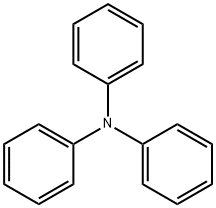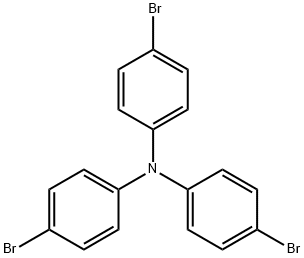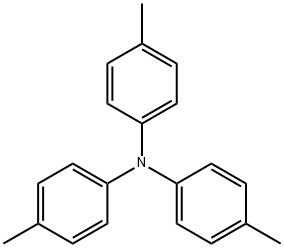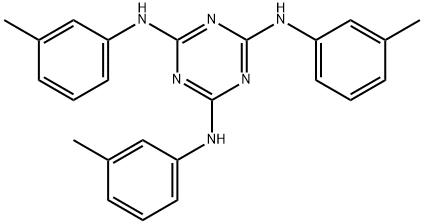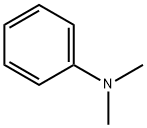PRODUCT Properties
| Melting point: | 124-128 °C (lit.) |
| Boiling point: | 347-348 °C (lit.) |
| Density | 0.7740 |
| refractive index | 1.3530 (estimate) |
| Flash point: | 365°C |
| storage temp. | Sealed in dry,Room Temperature |
| solubility | Chloroform (Slightly) |
| form | Crystalline Powder |
| pka | -3.04±0.30(Predicted) |
| color | Off-white to slightly beige |
| Water Solubility | insoluble |
| BRN | 2050487 |
| Exposure limits | NIOSH: TWA 5 mg/m3 |
| Stability: | Stable. Combustible. Incompatible with strong oxidizing agents. |
| CAS DataBase Reference | 603-34-9(CAS DataBase Reference) |
| NIST Chemistry Reference | Benzenamine, N,N-diphenyl-(603-34-9) |
| EPA Substance Registry System | Triphenylamine (603-34-9) |
Description and Uses
Organic light-emitting diode (OLED) devices have received much attention, because they are expected to be a next generation display and light source, thanks to lightweight and flexible organic materials.
- Triphenylamine is a propeller-like structural chromophore with a nitrogen atom center. The compound has a large steric hindrance and hyper conjugation electronic effect, which can enhance the stability of the nitrogen atomic radical. Triphenylamine materials also have a high hole mobility due to their unique free radicals nature. Many hole transport materials based on triphenylamine derivatives (TPD) are widely usable,because they are heat-resistant and amorphous.In addition to the TPDs, oxadiazole derivatives (PBD) having an electron transport property, Alq3 as a host material,and blue emissive distylyl derivatives are fundamental materials for amorphous OLED devices.
- It is used in the manufacture of photographic film.
- Triphenylamines (TPAs) are highly fluorescent compounds that are efficient to induce cell death upon visible light excitation.
- Triphenylamine is used in organic light-emitting diode as hole-transporters and as a pharmaceutical intermediate.
- It is coated on film bases as primary photoconductor.
Safety
| Symbol(GHS) |  GHS07 |
| Signal word | Warning |
| Hazard statements | H315-H319-H335 |
| Precautionary statements | P261-P280a-P304+P340-P305+P351+P338-P405-P501a |
| Hazard Codes | Xi |
| Risk Statements | 36/38-36/37/38-38-36 |
| Safety Statements | 26-28-37/39-26,37/39 |
| OEB | B |
| OEL | TWA: 5 mg/m3 |
| WGK Germany | 2 |
| RTECS | YK2680000 |
| Hazard Note | Irritant |
| TSCA | Yes |
| HS Code | 29214980 |
| Hazardous Substances Data | 603-34-9(Hazardous Substances Data) |

